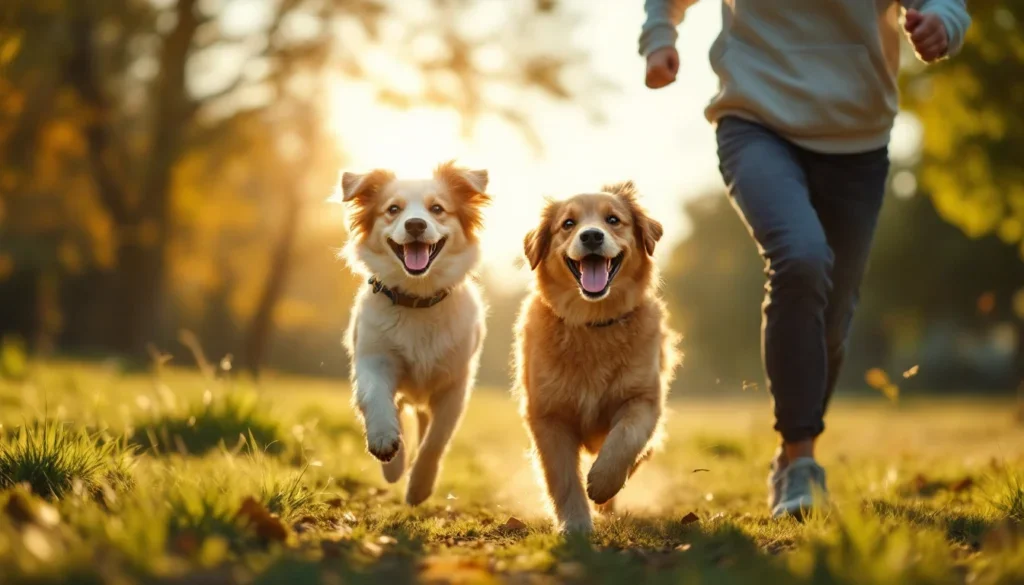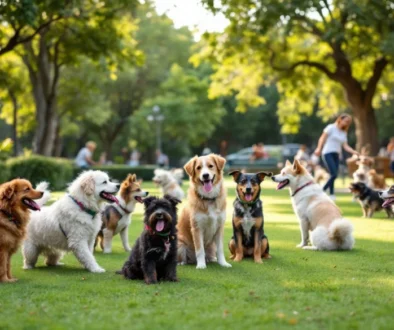How to Go on a Run with Your Dog
Running with a dog can be a fulfilling experience for both the owner and the pet. It’s not just about exercise; it’s about bonding, exploring, and enjoying the great outdoors together. However, before lacing up those running shoes, it’s essential to ensure that both you and your furry friend are ready for the adventure. This article will guide you through assessing your dog’s readiness, training essentials, safety guidelines, and the gear you’ll need for a successful run.
Assessing Your Dog’s Readiness for Running
Consider Breed Characteristics
Different dog breeds have varying energy levels and physical abilities. For instance, breeds like Border Collies, Labrador Retrievers, and Siberian Huskies are natural runners. They thrive on physical activity and can handle longer distances. In contrast, smaller breeds or those with shorter snouts, like Bulldogs or Dachshunds, may not be as suited for running. Understanding your dog’s breed characteristics is crucial in determining if they can keep up with your running routine.
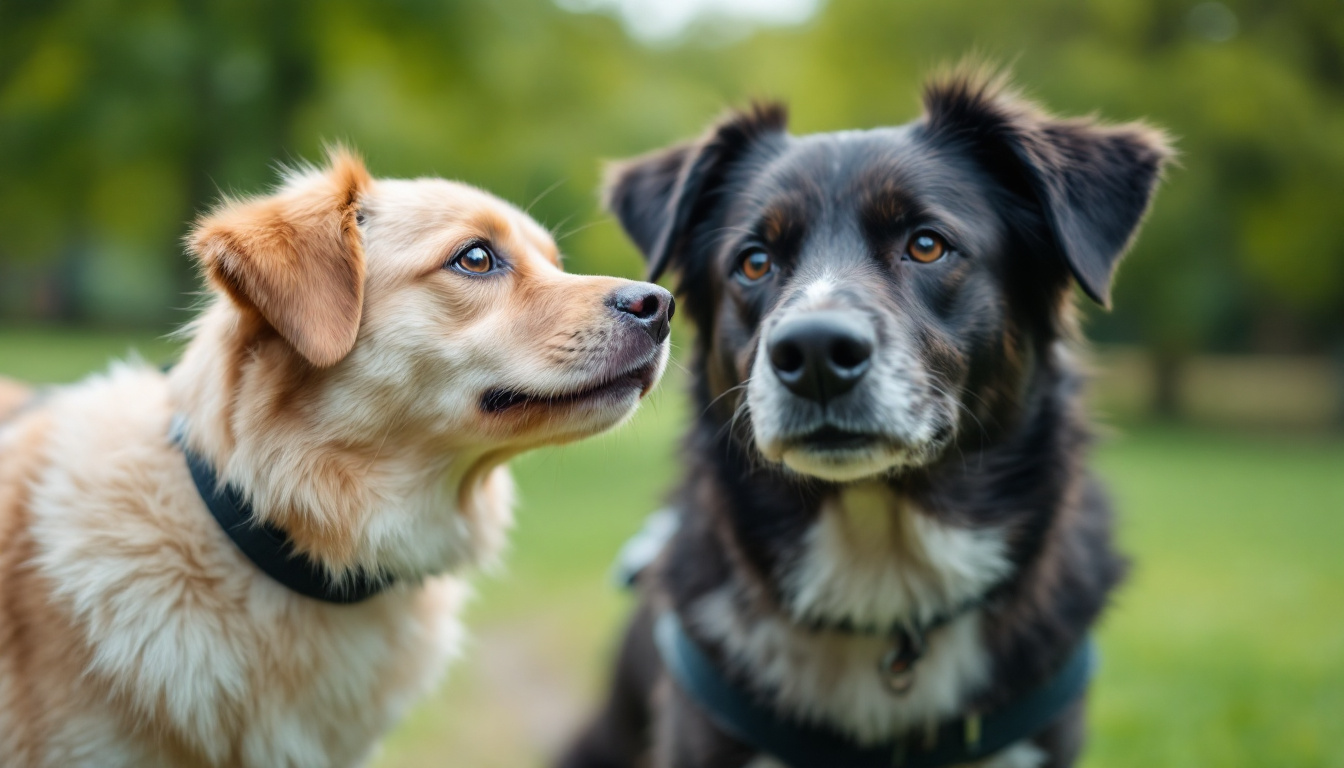
Additionally, consider your dog’s age and size. Puppies may have bursts of energy but are still developing. It’s best to wait until they are fully grown before embarking on long runs. Older dogs may also need special consideration, as they might have reduced stamina or joint issues. Always consult with a veterinarian if unsure about your dog’s ability to run. Furthermore, mixed-breed dogs can present a unique challenge, as their energy levels and physical capabilities may vary widely. Observing their behavior during playtime can provide insight into their endurance and enthusiasm for running, which can help you gauge their readiness.
Evaluate Health and Medical Conditions
Before hitting the pavement, it’s vital to assess your dog’s health. Regular vet check-ups can help identify any underlying health issues that may affect their ability to run. Conditions such as hip dysplasia, heart problems, or respiratory issues can make running difficult or even dangerous for your dog.
Be mindful of any medications your dog may be on, as some can affect energy levels or hydration. If your dog has been inactive for a while, a gradual introduction to running is essential. This will help them build stamina without risking injury. Additionally, pay attention to your dog’s body language during initial runs. Signs of fatigue, excessive panting, or reluctance to continue can indicate that they need a break or that their current fitness level isn’t adequate for the distance you’re attempting. Keeping track of their performance and comfort during these sessions can help you adjust your running plans accordingly, ensuring a safe and enjoyable experience for both of you.
Training Essentials for Running Together
Effective Lead Training Techniques
Training your dog to run alongside you requires patience and consistency. Start with basic leash training to ensure your dog walks calmly beside you. A well-fitted harness can be beneficial, as it provides better control without putting strain on your dog’s neck. Consider using a leash that allows for some flexibility, such as a bungee leash, which can absorb sudden pulls and help prevent injury to both you and your dog during those enthusiastic bursts of energy.
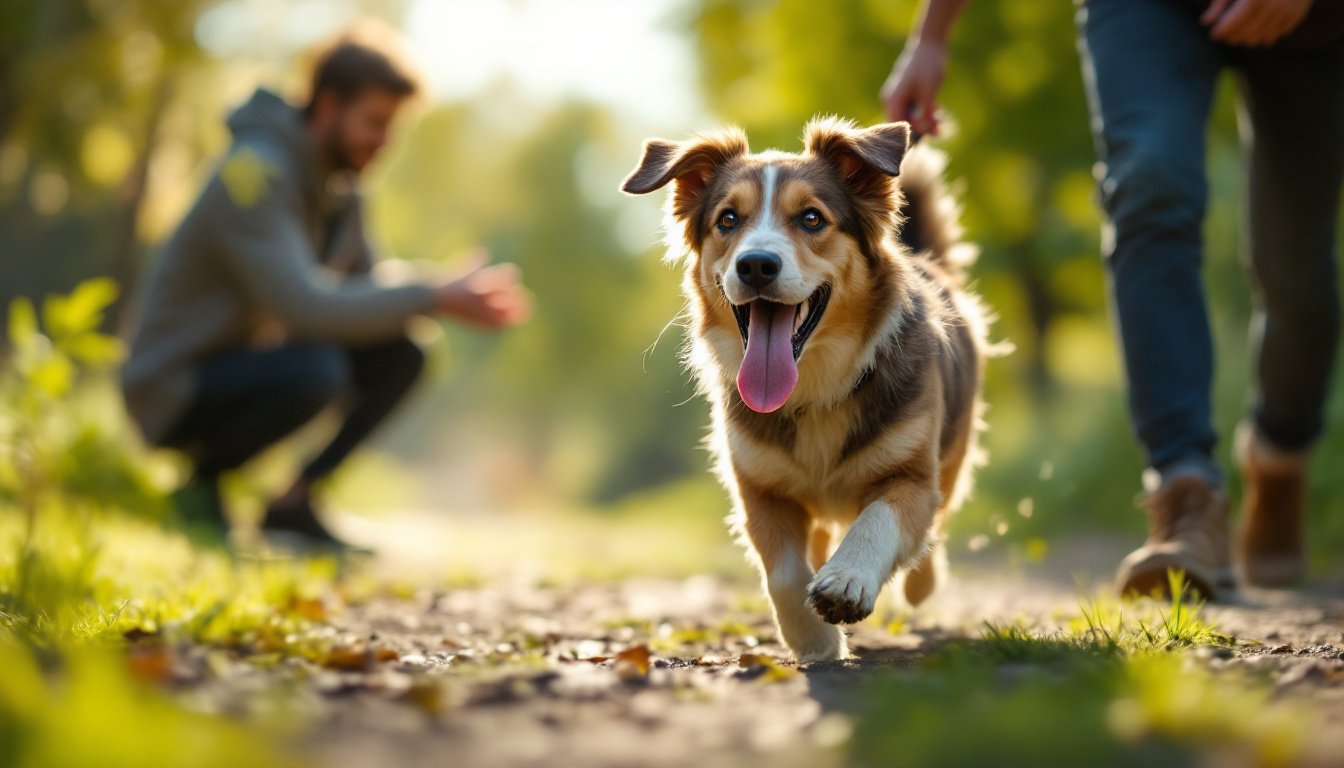
Use positive reinforcement techniques, such as treats and praise, to encourage good behavior. If your dog pulls on the leash, stop and wait for them to return to your side before continuing. This teaches them that staying close results in more enjoyable runs. Additionally, varying your running routes can help keep your dog mentally stimulated. Exploring new paths not only makes the experience exciting for your furry friend but also helps them learn to focus on you amidst different distractions, such as other dogs, cyclists, or wildlife.
Key Commands for Running Success
Establishing a few key commands can significantly enhance your running experience. Commands like “heel,” “slow,” and “stop” are essential for keeping your dog safe and well-behaved during runs. Practice these commands during walks before transitioning to running. It’s also beneficial to introduce a command for “go” or “let’s run,” which signals to your dog that it’s time to pick up the pace. This can help create a rhythm during your runs, allowing for a more enjoyable experience for both of you.
Incorporate fun activities during your training sessions, such as short sprints or obstacle courses. This not only keeps your dog engaged but also helps to reinforce their training in a stimulating environment. You might also want to consider joining a local running group that welcomes dogs, as this can provide socialization opportunities for your pet while allowing you to learn from other experienced dog runners. Engaging in group runs can also motivate you to stay committed to your training schedule, creating a routine that benefits both you and your canine companion.
Safety Guidelines for Enjoyable Runs
Begin with Short Distances
When starting a running routine with your dog, it’s best to begin with short distances. This allows your dog to adjust to the new activity without overexertion. Start with a brisk walk, gradually incorporating short running intervals. As your dog becomes more comfortable, you can slowly increase the distance.
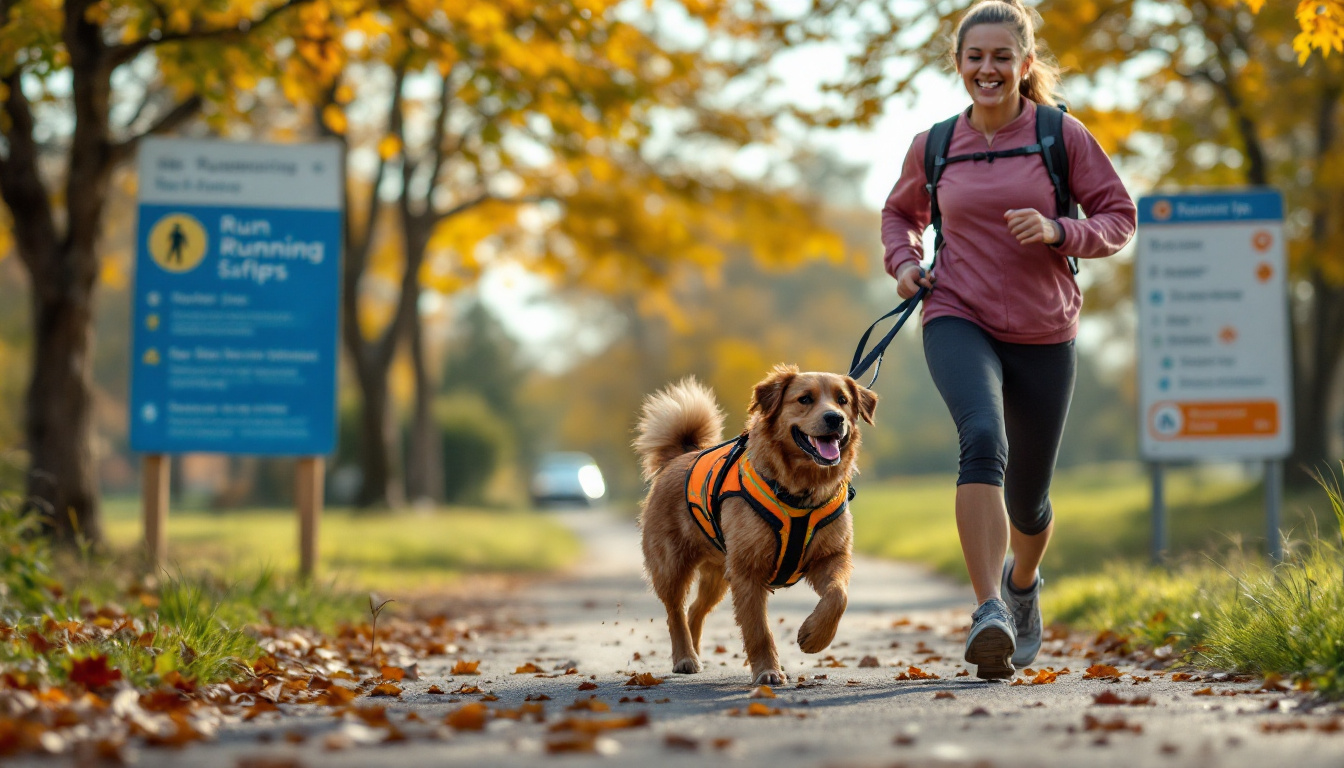
Monitor your dog closely during these initial runs. Look for signs of fatigue, such as excessive panting, lagging behind, or reluctance to continue. If your dog shows any signs of distress, it’s essential to stop and allow them to rest. Additionally, consider the terrain you are running on; softer surfaces like grass or dirt trails are generally easier on your dog’s joints compared to harder surfaces like concrete. This can make a significant difference in how your dog feels after a run.
Increase Distance Gradually
Just like humans, dogs need time to build their endurance. A good rule of thumb is to increase your running distance by no more than 10% each week. This gradual approach helps prevent injuries and ensures that your dog is physically prepared for longer runs. Incorporating varied routes can also keep the experience fresh and exciting for both of you; exploring new paths can stimulate your dog mentally and physically.
Incorporate rest days into your routine. These breaks allow your dog to recover and help prevent burnout. Remember, the goal is to create a sustainable running habit that both you and your dog can enjoy for years to come. On rest days, consider engaging in low-impact activities like swimming or playing fetch, which can provide a good workout without the strain of running.
Recognize Your Dog’s Cues
Every dog has its own way of communicating. Pay attention to your dog’s body language and behavior during runs. Signs of discomfort or fatigue can include slowing down, excessive panting, or seeking shade. If your dog seems to be struggling, it’s crucial to listen to their cues and adjust your pace or take a break. Familiarizing yourself with your dog’s normal behavior can help you quickly identify any changes that might indicate they are not feeling well.
Hydration is also key. Always carry water for both you and your dog, especially on warm days. Offer water during breaks to keep your dog hydrated and comfortable. Additionally, consider investing in a portable dog water bottle or collapsible bowl for convenience. On particularly hot days, it may also be beneficial to plan your runs during cooler times, such as early morning or late evening, to prevent overheating and ensure a more enjoyable experience for both of you.
Essential Running Gear for Dogs and Owners
Recommended Equipment for Dogs
Having the right gear can make a significant difference in the running experience. A comfortable, well-fitted harness is essential for control and comfort. Look for harnesses designed specifically for running, as they distribute pressure evenly across the dog’s body. These harnesses often feature padded straps and adjustable components to ensure a snug fit that won’t chafe your dog’s skin. Additionally, some models come with built-in handles, allowing for quick adjustments or assistance if your dog needs a boost over obstacles.
Consider investing in a hands-free leash that attaches to your waist. This allows you to maintain control while keeping your hands free for better balance and movement. A quality hands-free leash often includes shock-absorbing features to reduce strain on both you and your dog during sudden pulls. Additionally, reflective gear is crucial for early morning or evening runs to enhance visibility. Look for collars and leashes with reflective stitching or LED lights, as they can significantly improve safety during low-light conditions. Furthermore, consider dog booties to protect your pet’s paws from rough terrain or extreme temperatures, ensuring their comfort and safety while you both enjoy your runs.
Best Attire for Runners
For the human side of the equation, wearing appropriate running attire is equally important. Choose lightweight, moisture-wicking fabrics that keep you comfortable during your runs. These materials help to regulate body temperature and wick away sweat, reducing the risk of chafing and discomfort. Invest in a good pair of running shoes that provide support and cushioning, as the right footwear can prevent injuries and enhance your performance. Make sure to replace your shoes regularly, as worn-out footwear can lead to discomfort and potential foot problems.
Don’t forget to protect yourself from the elements. Sunscreen, hats, and sunglasses are essential for sunny days, while lightweight jackets can keep you warm during cooler runs. Consider layering your clothing to adapt to changing weather conditions easily. A base layer can wick moisture away, while an outer layer can shield you from wind and rain. Always dress according to the weather to ensure a pleasant experience for both you and your dog. Additionally, investing in moisture-wicking socks can help keep your feet dry and blister-free, allowing you to focus on enjoying your run rather than discomfort. Remember, the right gear not only enhances your performance but also makes the experience more enjoyable for both you and your furry companion.

